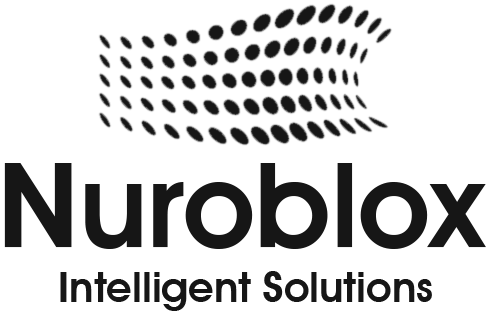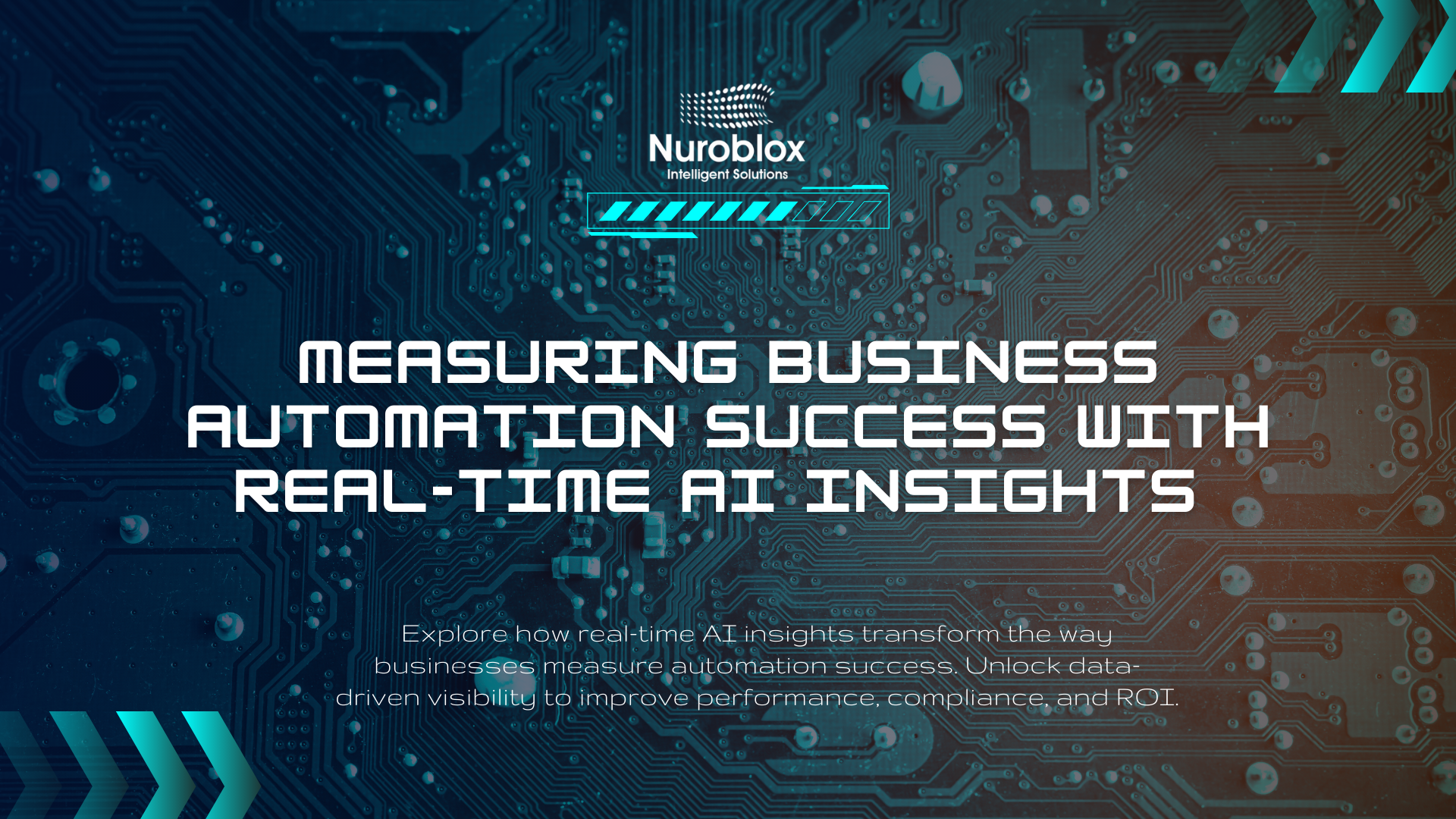Measuring Business Automation Success with Real-Time AI Insights
In 2025, the question is no longer if businesses should automate, but how well they are doing it. With a staggering 70% of companies expected to adopt some form of business automation, the pressure to demonstrate tangible value has never been higher. Yet, many organizations still rely on outdated metrics, leaving them unable to see the full picture. Traditional methods like basic ROI calculations fall short of capturing the transformative impact of today’s intelligent systems. The true evolution lies in leveraging real-time AI insights to measure, refine, and maximize the value of automation investments.
This article explores how to move beyond legacy metrics and embrace a more sophisticated, AI-driven framework for measuring business automation success. We will cover-
- The limitations of traditional success metrics.
- The new gold standard of KPIs for AI-powered automation.
- How real-time insights transform measurement from a reactive to a proactive discipline.
- Actionable strategies for implementing an AI-centric measurement framework.
The Challenge – Moving Beyond Traditional Automation Metrics
For years, the success of business automation was measured through a straightforward lens- cost savings and speed. Metrics like Return on Investment (ROI), process cycle time, and basic task completion rates were the primary indicators. While these metrics are still relevant, they only scratch the surface of what intelligent automation can achieve.
Traditional automation follows fixed, rule-based pathways. Its success metrics are, therefore, equally rigid. They can tell you if a process is cheaper or faster, but they fail to capture the dynamic, value-added benefits of modern AI. AI-powered automation is not just about doing the same tasks faster; it’s about reimagining processes to be more intelligent, adaptive, and predictive. Relying solely on old metrics for these advanced systems is like trying to measure a supercomputer’s performance with an abacus; you’re missing the nuances that define its power.
The AI Revolution in Business Automation
The integration of Artificial Intelligence (AI) marks a fundamental shift from task-based automation to intelligent, data-driven workflow optimization. Unlike its predecessor, AI automation uses machine learning and advanced algorithms to learn from data, identify patterns, make decisions, and improve over time. This capability is poised to add up to $15.7 trillion to the global economy by 2030, primarily through gains in productivity and strategic decision-making.
AI transforms automation from a rigid tool into an intelligent partner. Consider these examples –
- Fraud Detection – American Express utilizes AI-driven automation to analyze billions of transactions, allowing it to prevent an estimated $2 billion in potential fraud each year by identifying suspicious activities in real time.
- Document Analysis – JPMorgan Chase implemented an AI platform called COiN to review complex legal documents. This system automates a task that previously took 360,000 hours of human labor annually, interpreting the documents in mere seconds.
- Personalization – Netflix’s recommendation engine uses AI to adapt to real-time user data, saving the company nearly $1 billion per year by anticipating viewer preferences and increasing engagement.
These examples illustrate that the value of AI in business automation extends far beyond simple efficiency. It creates new capabilities, mitigates risk, and drives strategic growth all factors that traditional metrics struggle to quantify.
Defining the New Gold Standard – Key Metrics for AI-Powered Automation
To accurately measure the success of modern business automation, leaders must adopt a multi-faceted approach that captures operational, financial, customer-facing, and strategic benefits.
Operational Efficiency and Productivity
While speed remains important, AI enhances operational measurement by focusing on accuracy, reliability, and resource optimization.
- Error Rate Reduction – AI excels at processing vast amounts of data with high precision, dramatically reducing the human errors common in repetitive tasks. Financial firms, for example, have achieved 98% accuracy in processing customer applications by embedding machine learning into their validation rules.
- Process Reliability and Uptime – A key metric is the consistency and predictability of automated systems. AI can contribute to this by enabling predictive maintenance, which warns of potential equipment failures before they happen, minimizing downtime.
- Productivity Gains – The impact of AI on labor productivity can be immense, with some studies showing increases of up to 40%. This is measured not just by tasks completed, but by the re-allocation of employee time from mundane work to high-value strategic initiatives.
Financial Impact and ROI
AI provides a more nuanced and comprehensive view of financial returns by incorporating factors that go beyond simple cost-cutting.
- Comprehensive ROI Analysis – A modern ROI calculation includes direct cost savings from reduced labor, but also the financial impact of increased accuracy (e.g., fewer late fees), enhanced fraud detection, and optimized resource allocation. Companies leveraging AI-driven automation have reported operational cost reductions of up to 75% for certain tasks.
- Cost Per Engaged Account (CPEA) – In B2B marketing and sales, AI enables the tracking of more sophisticated metrics like CPEA, which measures the efficiency of engaging high-value target accounts.
- Revenue Influence Attribution – AI-powered analytics can more accurately attribute revenue to specific automated campaigns or workflow improvements, providing a clearer link between automation efforts and top-line growth.
Customer Experience and Satisfaction
Automation’s success is intrinsically linked to its impact on the end customer. AI allows for a deeper understanding of this connection.
- Enhanced Customer Response and Resolution Time – AI-powered chatbots and virtual assistants provide 24/7 support, drastically reducing customer wait times. Companies have seen an 80% reduction in customer service workloads through such implementations.
- Personalization at Scale – AI analyzes customer data to predict needs and tailor recommendations, leading to higher engagement and satisfaction. This is measured through metrics like Net Promoter Score (NPS), customer satisfaction (CSAT) scores, and conversion rates, which have increased by as much as 30% in retail through AI-driven personalization.
- Customer Churn Prediction – Predictive analytics can identify customers at risk of churning, allowing businesses to intervene proactively. This shifts the focus from reacting to customer loss to preventing it.
Employee Engagement and Strategic Enablement
A successful automation strategy empowers employees, rather than replacing them.
- Employee Satisfaction and Retention – By automating repetitive and manual tasks, businesses free up their employees to focus on more meaningful and strategic work, which can improve morale and job satisfaction. This can be measured through employee surveys and retention rates.
- Time Reallocated to High-Value Work – A critical metric is the amount of time saved on manual tasks and how that time is repurposed. One healthcare practice saved 15 hours per week on administrative tasks, allowing staff to focus more on patient care.
How Real-Time AI Insights Transform Measurement
The most significant shift in measuring business automation is the move from historical reporting to real-time analysis. AI-powered business intelligence (BI) tools provide dynamic dashboards and instant alerts, allowing leaders to monitor operations as they happen.
From Lagging Indicators to Proactive Optimization
Traditional measurement relies on lagging indicators found in monthly or quarterly reports. By the time an issue is identified, significant time and resources may have already been lost. Real-time AI insights turn this model on its head. For example, a manufacturer can monitor production output in real time and immediately address a slowdown, rather than waiting for an end-of-month report to reveal the inefficiency. This enables proactive problem-solving and continuous optimization.
Uncovering Hidden Inefficiencies
Many business inefficiencies are deeply embedded in daily workflows and are invisible to traditional analysis. AI-powered process and task mining tools capture detailed, task-level data across departments to reveal hidden bottlenecks and redundancies. This provides an objective, data-backed view of why inefficiencies are occurring, allowing for more precise and effective interventions.
Enabling Data-Driven Decision-Making at Scale
Historically, deep data analysis was the exclusive domain of data scientists. Modern AI-driven BI platforms, such as Looker, use natural language processing and smart visualizations to make complex data accessible to business users across all departments. This democratizes data, allowing anyone on a team to explore data, ask questions, and get trusted answers in real time. According to Gartner, 79% of corporate strategists see this accessibility of AI and analytics as critical to their future success.

To effectively measure AI-powered business automation, organizations must lay the proper groundwork.
- Establish Clear Goals – Begin by defining specific, measurable, achievable, relevant, and time-bound (SMART) goals for any automation project. These goals should align with broader business objectives.
- Ensure Data Quality – Real-time insights are only as valuable as the data that feeds them. Implementing robust data governance practices to ensure data is accurate, clean, and reliable is non-negotiable.
- Integrate Systems – To get a holistic view, businesses must break down data silos. Ensure that automated systems are seamlessly integrated with existing infrastructure, including ERPs and CRMs.
- Foster a Data-Driven Culture – Technology alone is not enough. Success requires a cultural shift where stakeholders at all levels are empowered to use data to make decisions and are encouraged to embrace change.
The era of intelligent automation demands an equally intelligent approach to measuring success. Moving beyond legacy metrics to embrace a holistic, AI-driven framework is essential for any business looking to not only survive but thrive in the digital age. By focusing on a combination of operational, financial, customer, and employee-centric KPIs all powered by real-time data organizations can unlock the full transformative potential of their automation investments. The goal is no longer just to automate, but to build a self-learning, perpetually optimizing engine for growth. How will you redefine your metrics to measure what truly matters?


